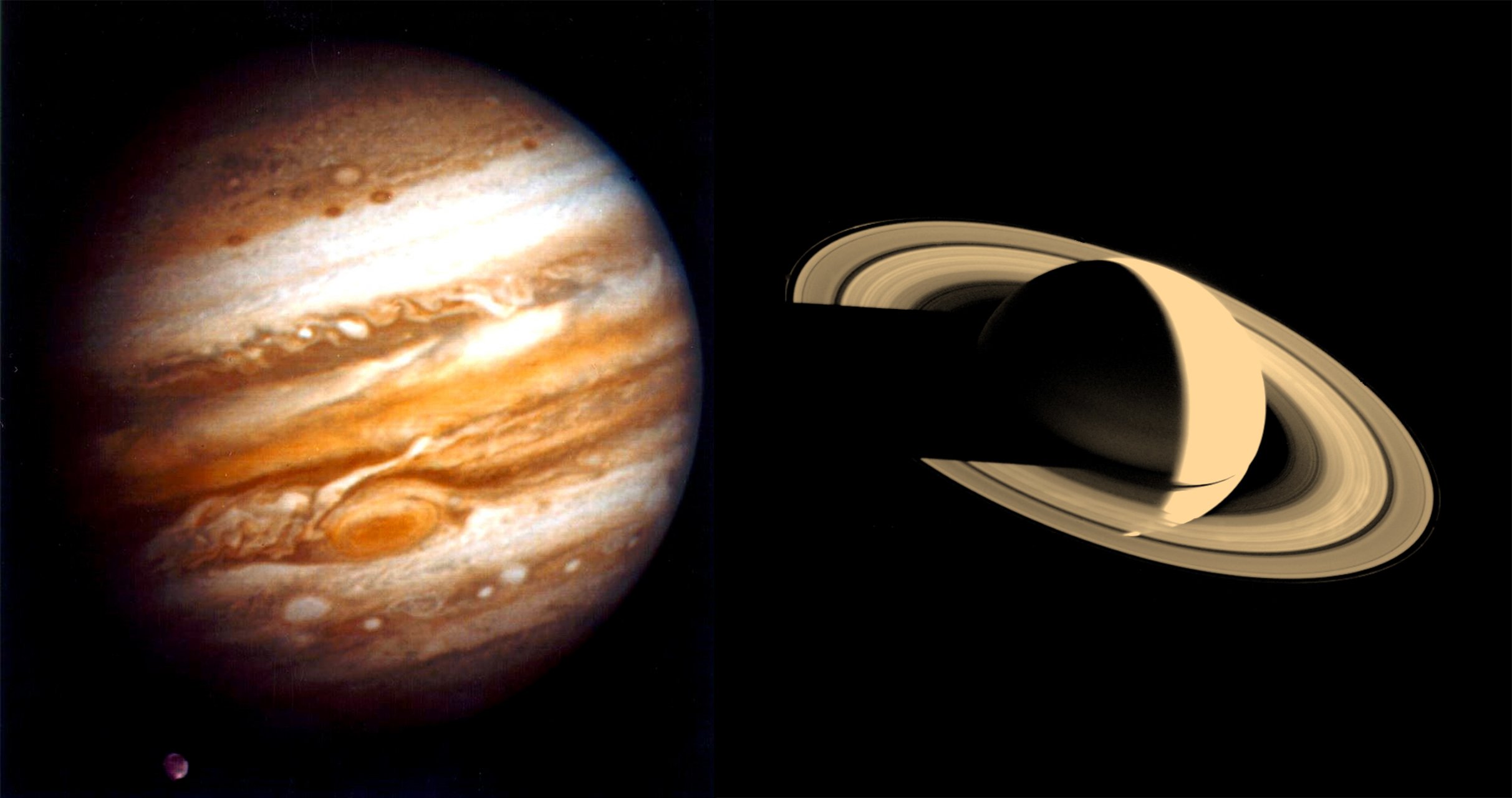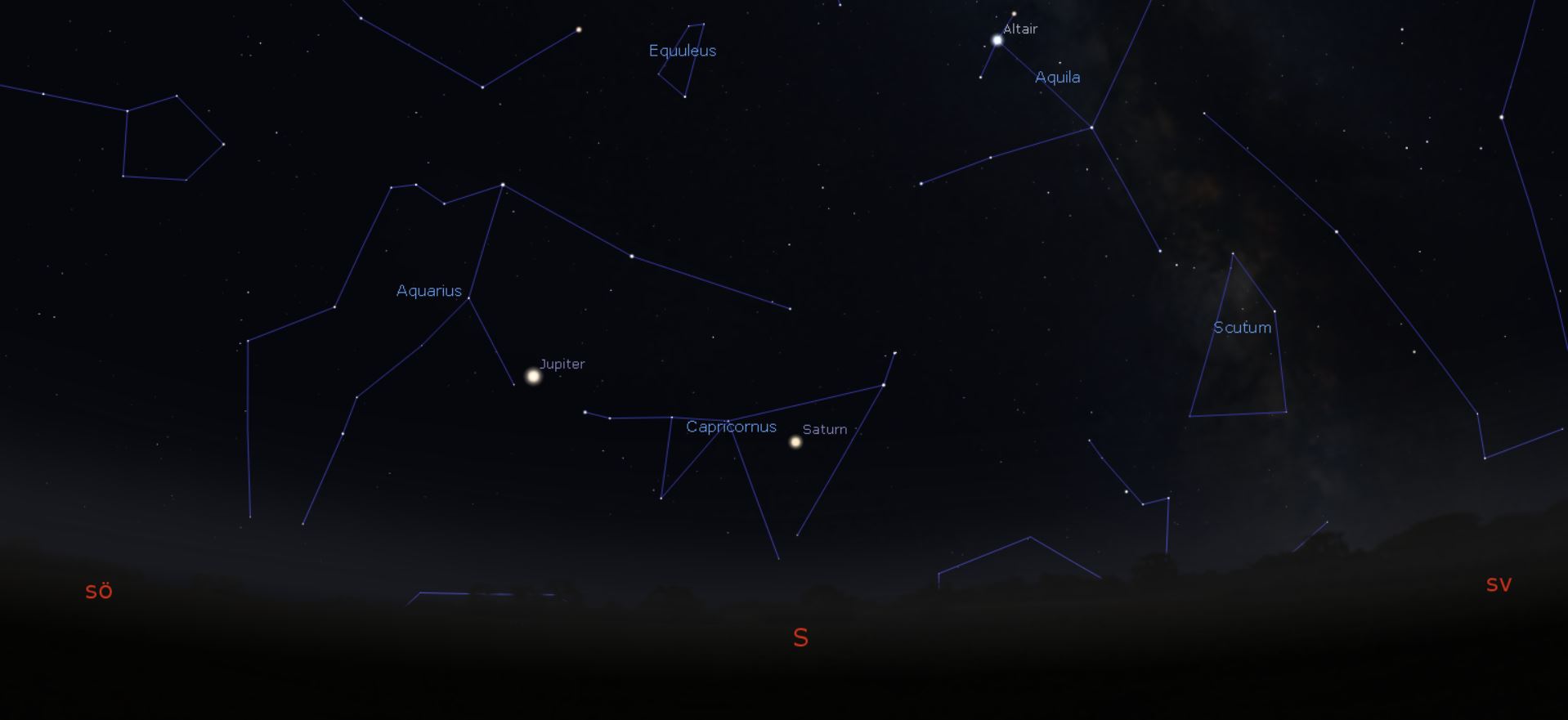Jupiter's zonal bands and the Great Red Spot, not to mention the four Galilean moons. Everything can be observed even in a small amateur telescope. Saturn with its rings is without a doubt a universally beautiful object - everyone remembers when they saw Saturn in a telescope for the first time!

The planets Jupiter and Saturn are finally easy to observe from the Nordic countries again. But perhaps not as detailed as the cameras on board NASA's Voyager 1 could photograph. Photo: NASA / JPL
The photographs above show how the American space probe Voyager 1 saw the planets in 1979 and 1980. They can’t hardly be seen with such a color and detail in an amateur telescope; but it is not far off.
The Earth's and the two giant planets' orbits around the Sun in recent years have put the planets close to or below the horizon at night in the Nordic countries. But now it is starting to change and both Jupiter and Saturn can be seen well past midnight on the horizon at midnight, before turning down again (see star map).
To observe the planets is about magnification. To see at all that Jupiter and Saturn are planets and not stars, you should at least get up to 30-40 times magnification. Then you see that the planets are disks – i.e. not just points of light like the stars.
To see Jupiter's band and the Great Red Spot, you need to get up to at least 100 times magnification. In a dark night sky, a 70mm refractor may be enough, but 90mm or larger is preferable.
Saturn's rings are easier to see than the details on Jupiter. Over 50 times magnification and you see the rings.

Jupiter and Saturn are easy to find in the August sky. In the middle of the month, at midnight, they can be seen 15-20 degrees above the horizon in the south. The map is made in the free software Stellarium.
But the same as with Jupiter: the larger the aperture of the telescope, the higher the magnification and the more details you can see. In e.g. an 8-inch Schmidt-Cassegrain, a dark night and 200 times magnification is a real experience.
A customer once told how he had shown Saturn in his Celestron 11-inch telescope to his friend. The person in question could hardly be convinced that it was Saturn you could see so well "live" - and thought for a long time that a photo of Saturn was hidden in the telescope!
Text: Claes Tunälv